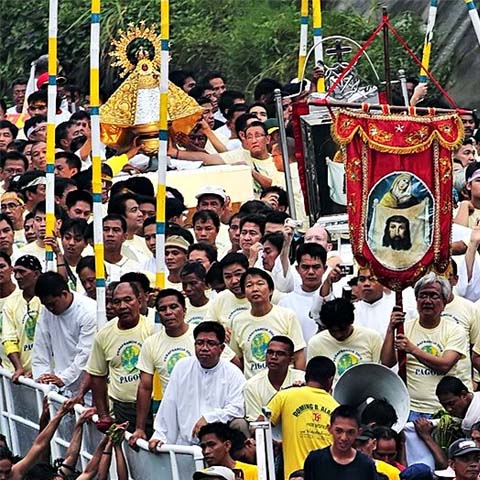Catholicism and the Catholic church in the Philippines have been important factors in effecting the integration of the Chinese in the Philippines into the mainstream society since the early Spanish period in the 16th century. The Spanish friars were eager not only to Christianize the local Chinese but also further evangelize and convert the Chinese people in China.
To attract them to Christianity, the local Chinese converts were accorded the same rights enjoyed by natives. These privileges, which the pagan Chinese are deprived of, included reduced tribute and the freedom to move or live outside the Parian, the Chinese ghetto during most of the Spanish colonial rule period.
The Catholic Chinese were not at the passive receiving end. Suspected of and even ridiculed for being insincere or disloyal to the Catholic faith, many took the initiative to display their adherence to their new religion, especially to gain social acceptance. Unfortunately, historical records rarely mention this.
One of the few accounts is found in the book The Lady of the Cimarron: the Peñafrancia Devotion in the Spanish Kabikolan 1710-1897 (Bicol Historical Research Center, 2010) written by Dr. Danilo Gerona, a professor at the Ateneo de Naga University and director of the Institute for Bicol History and Culture.
The most controversial from among these devotees were the Chinese community. Since the 17th century, Spanish friars had been suspecting the Chinese sincerity regarding this Christian conversion as more a ploy for their social-political acceptance in the native and Spanish-dominated society. But as the Chinese assumed greater influence in the economic affairs in the later part of the 19th century, they gradually earned not only the respect but also the envy of some sectors in the colonial society.
Series of articles published in the El Eco de Sur in 1894 were devoted to bitter attacks against the Chinese businessmen in the region, accusing them of unfair and illicit commercial practices. With their ethnic identity sociologically infirmed, the Chinese needed a solid and less contentious ground for admission in the colonial society such as academic prestige or bureaucratic power. But these were less accessible to the Chinese than to the indios, except for another avenue left open to all, including the Chinese, Catholicism.
It was in the area where the Chinese poured their resources, giving up profit for prestige and goodwill. And there was no better icon commending immense veneration among the Bicolanos than the Virgin of Peñafrancia. Hence, by being part of its celebration, the Chinese inconspicuously legitimized their presence.
During the annual celebration of the fiesta in the last decades of the 19th century, the Chinese made their presence felt by rowing their own vessel during the river procession. Some of these Chinese wanted to leave their distinctive mark in the annals of this religious tradition and offered their personal contribution. One of the devotees, the wealthy merchant from Albay, Simon Li-Tuanqui, made a donation of P100 for the construction of the belfry and even donated a bell.
By actively participating in the annual feast of Our Lady of Peñafrancia, the Chinese in Bicol demonstrated their intention to be accepted as part of the mainstream community.





